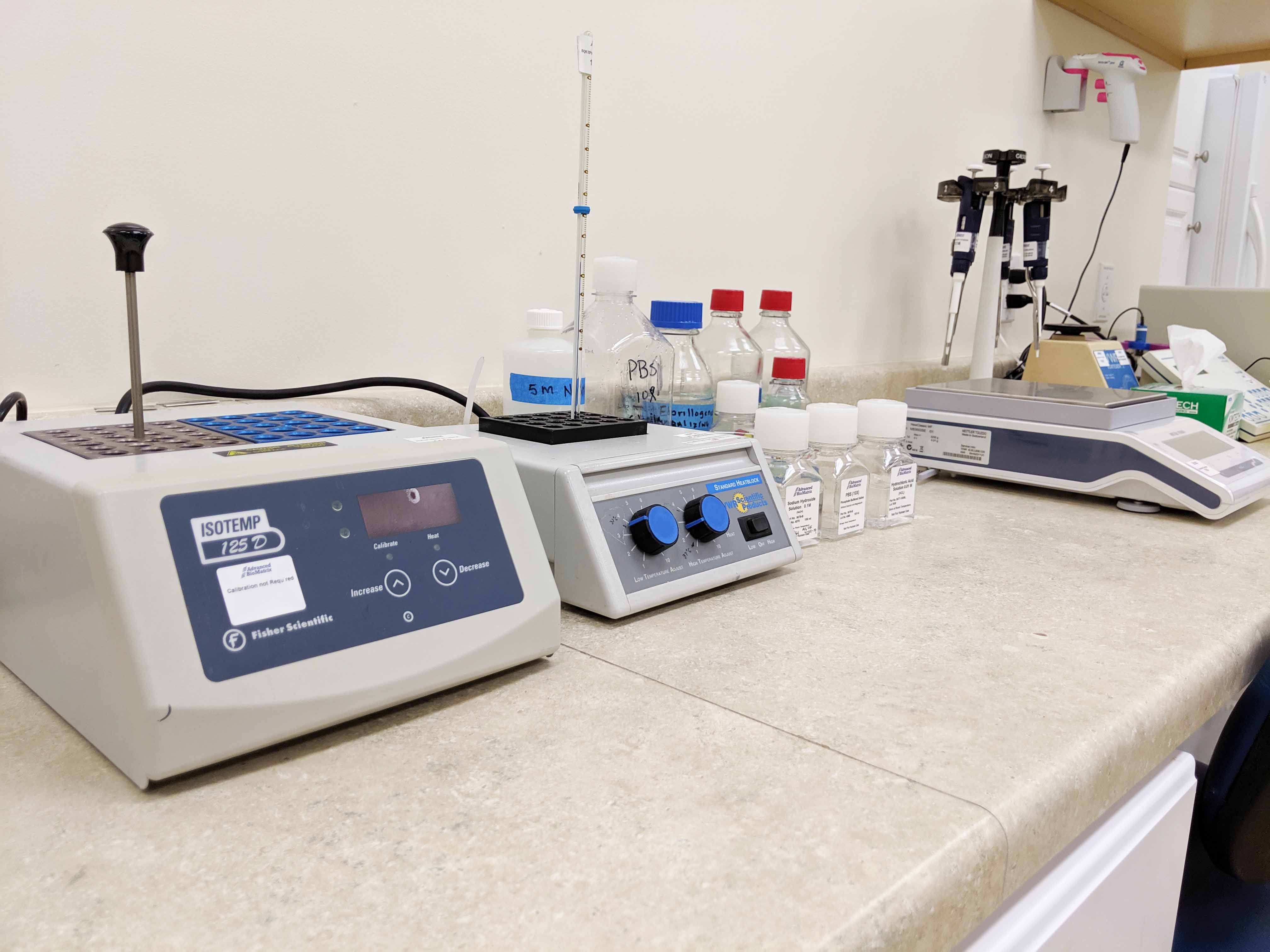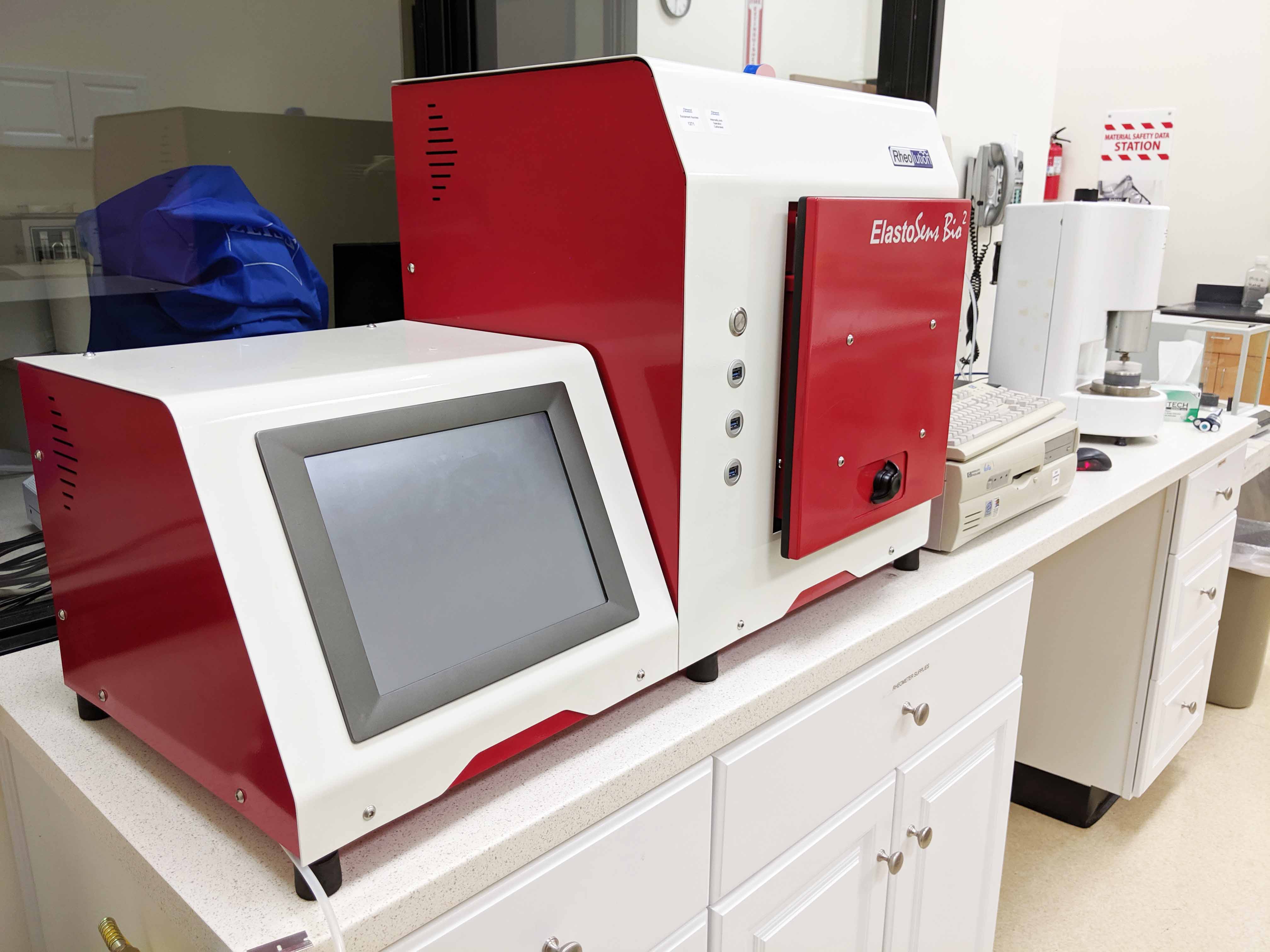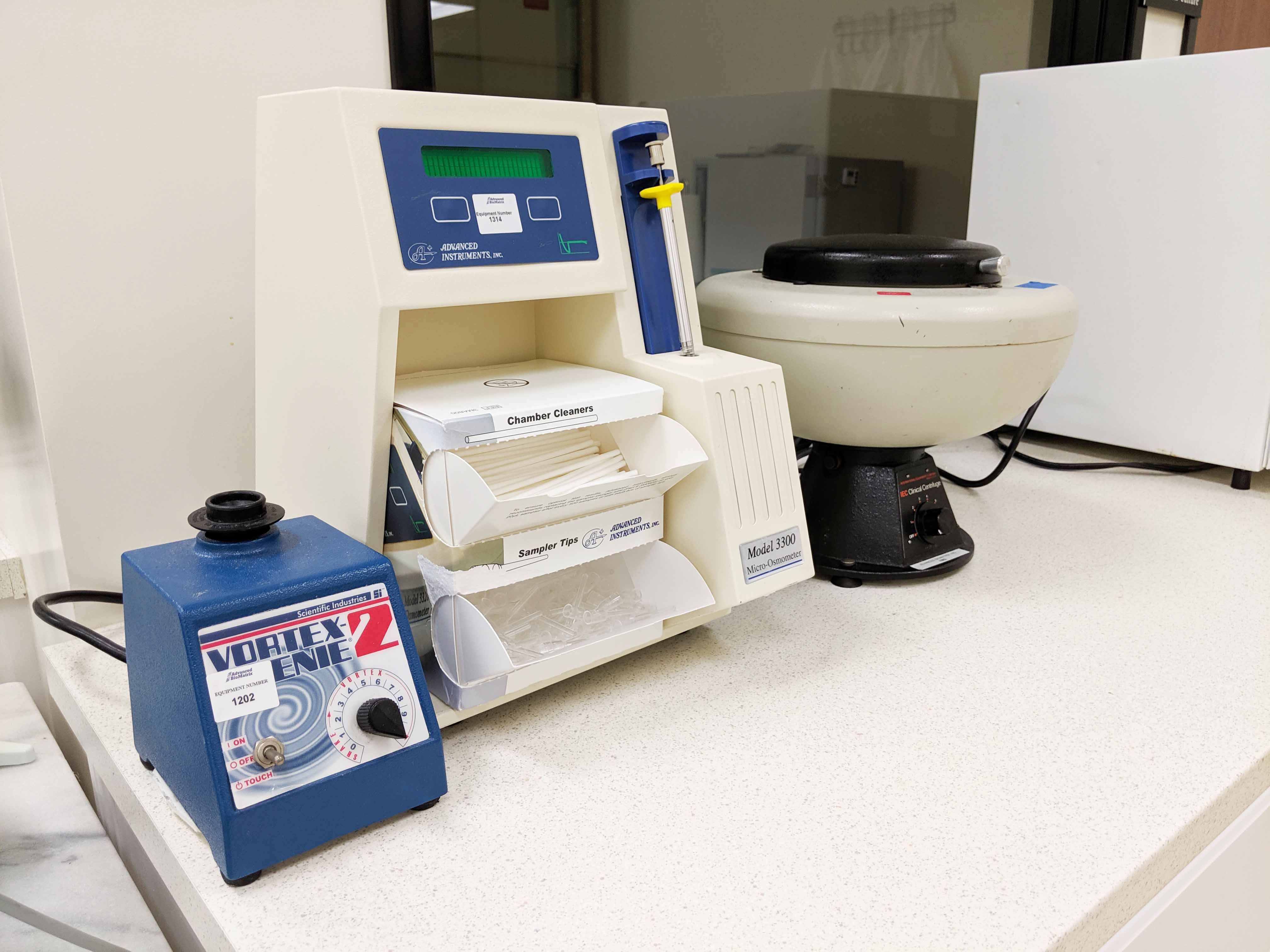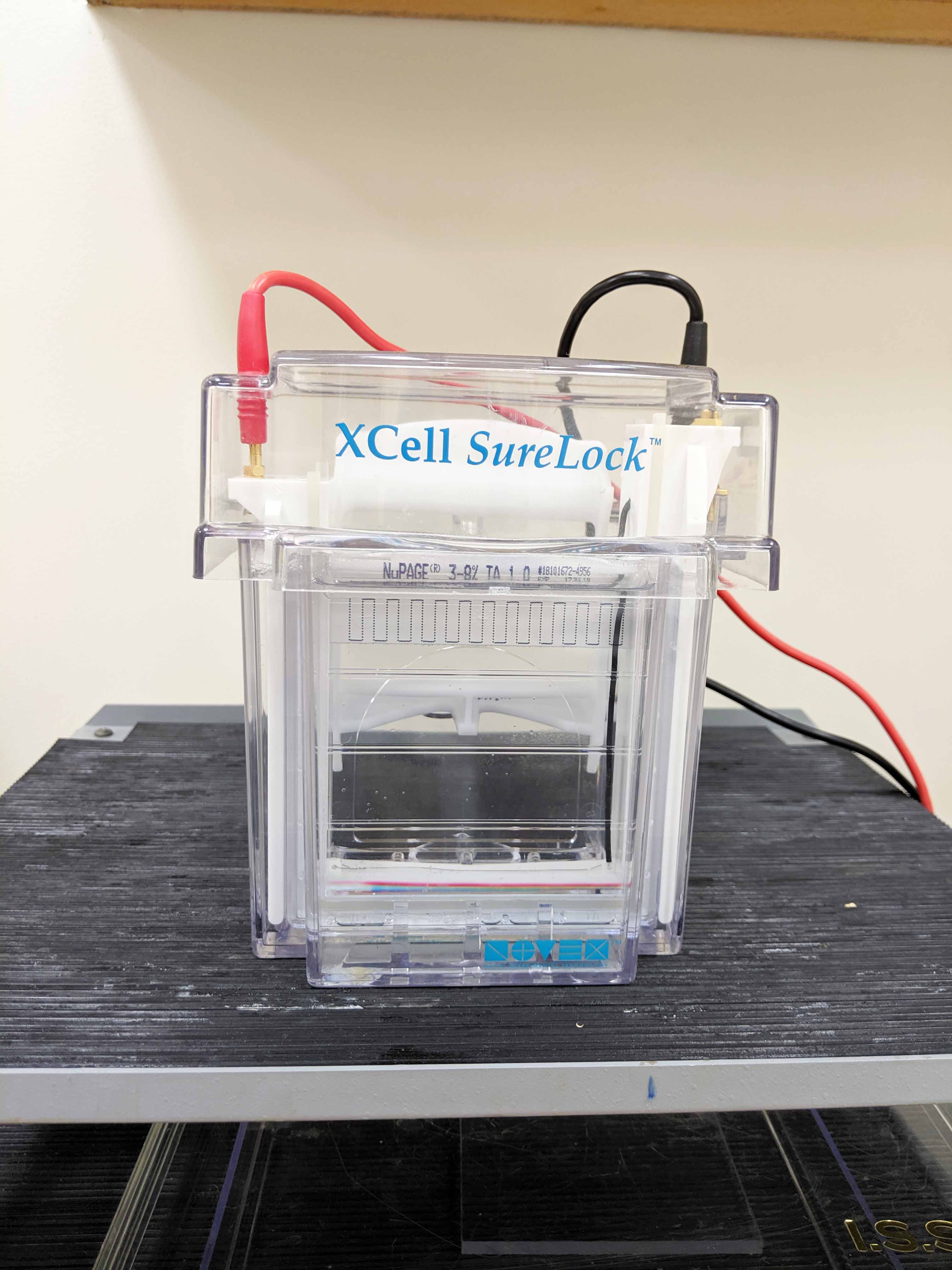Core Analytical Capabilities
07/24/19
Our quality control program and testing provide a platform for ensuring that our products meet the highest quality standards and specifications. Our stringent quality control requirements help ensure lot-to-lot consistency, giving you confidence in your research.
Protein Analysis (Biuret and BCA)
A key product attribute of many products is the protein level. Protein analysis is routinely used for in-process protein determination of materials in the manufacturing process and final product analysis.

Cell Culture, Attachment, and Live/Dead Assays
The primary applications for a large number of our products is tissue engineering, cell culture and cell analysis. Many products are cell culture tested to verify biocompatibility, cell attachment and cell proliferation. We have a number of various cell lines for performing these evaluations.
Microscopy Size Measurements
It is important to be able to dimensionally measure certain 3D scaffolds products and bioprinted materials. Also, microscopy measurements of certain products consisting of particulates and spheres can be important. With this measurement method, we are able to check our materials to ensure proper dimensionality and size determination.

Amino Acid Analysis
Amino Acid analysis (AAA) is performed on several of our products. This assay is particularly useful as a verification method for protein determination. Also, we use AAA to test for total amino acid content as part of determining the degree of modification of some tunable hydrogels.
Collagen Solubility and Denaturation Assay
The degree of solubility and denaturation of collagen products is important to evaluate. This assay can be used for the development of new products and stability testing of products.
Rheology
The viscoelastic properties of hydrogels are analyzed using an oscillation plate rheometer of some products. Other products are analyzed using a kinetic contactless and non-destructive instrument as a function of time and temperature. This method uses vibration
to measure the viscoelasticity of the hydrogel. Measuring the mechanical properties of hydrogels provides important information for further characterization of cell-to-matrix interactions.
Kinetic Gel Tests
Many products are designed to transition from a liquid to a hydrogel under certain conditions. Kinetic gel tests measure the degree of polymerization over time and is useful to evaluate lot-to-lot consistency of a product and comparison of various biomaterials.

Fibrillogenesis
This test measures the kinetics of fibril formation of various collagen preparations as the fibrils undergo a self-assembly process under controlled test conditions. This fibrillogenesis assay confirms the efficiency and consistency of fibril formation of collagen products.
pH and Osmolality
pH and ionic strength levels are generally critical in the manufacturing, performance, stability and use of many products. A variety of test methods are employed to test for pH, salt levels and chemical concentrations.

SDS PAGE Electrophoresis Coomassie Staining
SDS PAGE electrophoresis is an analytical technique to separate proteins based on their molecular weight – polypeptide chain length. Smaller proteins migrate faster due to less resistance from the gel matrix. The gel is stained with Coomassie Blue stain to visualize the banding patterns. This test can be used to identify proteins, provide information as to protein fragments or proteolysis.
SDS PAGE Electrophoresis Silver Staining
Silver staining is used to detect proteins after electrophoretic separation on polyacrylamide gels. It combines excellent sensitivity while using very simple equipment, methods and chemicals. The technique involves the deposition of metallic silver onto the surface of a gel at the location of protein bands. Silver ions interact and bind with certain protein functional groups. This method provides a very sensitive method for determining the product purity.

Viscosity
This test is used in several processes to measures the viscosity of both in-process materials and final products. Viscosity is a reliable method to demonstrate process and product consistency.
Differential Scanning Calorimetry (DSC)
This test is a thermo-analytical technique in which the difference in the amount of heat required to increase the temperature of a sample and reference is measured as a function of temperature. Both the test sample and reference are maintained at the same temperature throughout the test. The temperature program for a DSC analysis is designed such that the sample holder temperature increases linearly as a function of time. The reference sample has a well-defined heat capacity over the range of temperatures being scanned.
Sterility
This test measures the absence of microbiological contamination in products. Representative samples are removed from the product lot and tested according to a modified USP XXI method employing three microbiological media screening for bacteria, molds and yeast incubated up to 14 days. This testing provides information and assurances that the products are free of contamination.
Endotoxin
Endotoxin levels are tested on many of our products. Endotoxins can have cytotoxic and negative influences on various cell types and cell expression systems. Measures are taken to minimize potential endotoxin levels in our products.




